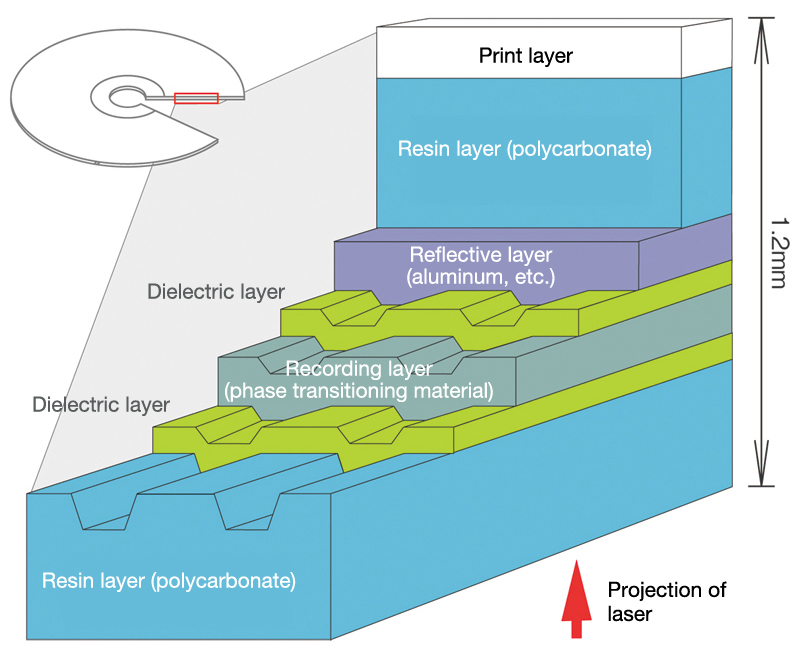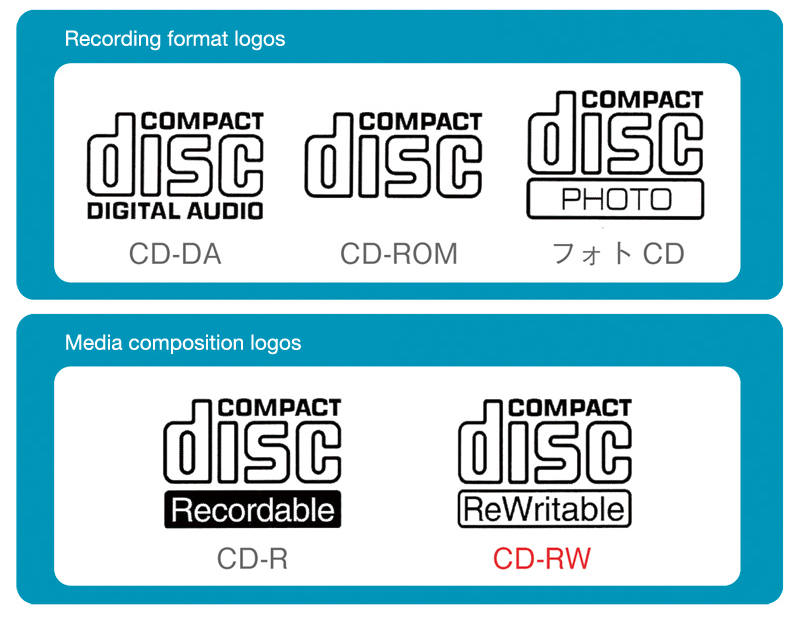CD-RW
CD-RW
CD-RW
CATEGORIES
CD-Rewritable (CD-RW) is a rewritable medium which uses a metal phase transitioning material in the recording layer (specified in Orange Book Part III) and records information by converting the crystalline state of the material to a non-crystalline (amorphous) state with heat from a laser. Information on the disc can thus be deleted and overwritten by reheating. The geometry of the medium and the drive mechanism are interchangeable with those of a normal CD, but the reflectivity of a CD-RW is low both in its crystalline and non-crystalline states and may be difficult to read unless a multi-read drive is used. Furthermore, because the phase transitioning material needs to be heated and cooled rapidly, it has the drawback of being incapable, in principle, of high-speed recording.
Because the metallic recording layer is less prone to aging than the organic dye of a CD-R, the CD-RW has a longer life but this is known to be drastically reduced by increased temperature and humidity. Therefore, CD-RWs should be stored in a dry, cool, dark place.
Like CD-R, information can be recorded and added to a CD-RW using the Disc at Once (DAO) method in which all of the information on the medium is written at once, as well as via incremental writing methods such as Track at Once (TAO), Session at Once (SAO) and Packet Write. Unfortunately, however, it is not rare for a particular recording format to be predesignated to each media type, such as TAO for CD-R and Packet Write for CD-RW, by the settings of the operating system or the application. Some users choose not to use CD-RW because formatting a disc so that it can be packet written takes so much time, but the recording format is essentially something that the user should be allowed to select. Since the packet writing file system is application-dependent, if a unique format has been used, this could create compatibility problems. When using Universal Disk Format (UDF), closing the disc reduces this risk. Packet writing on a CD-RW is different to doing so on a CD-R in that, with a CD-RW, the files are actually overwritten. Regardless of the recording method used, the entire disc can be formatted (erased) at any time. However, it should be noted that a “quick erase” does not actually erase all of the recorded data.
RELATED PAGES

 The structure of a CD-RW
The structure of a CD-RW CD logos and symbols
CD logos and symbols
